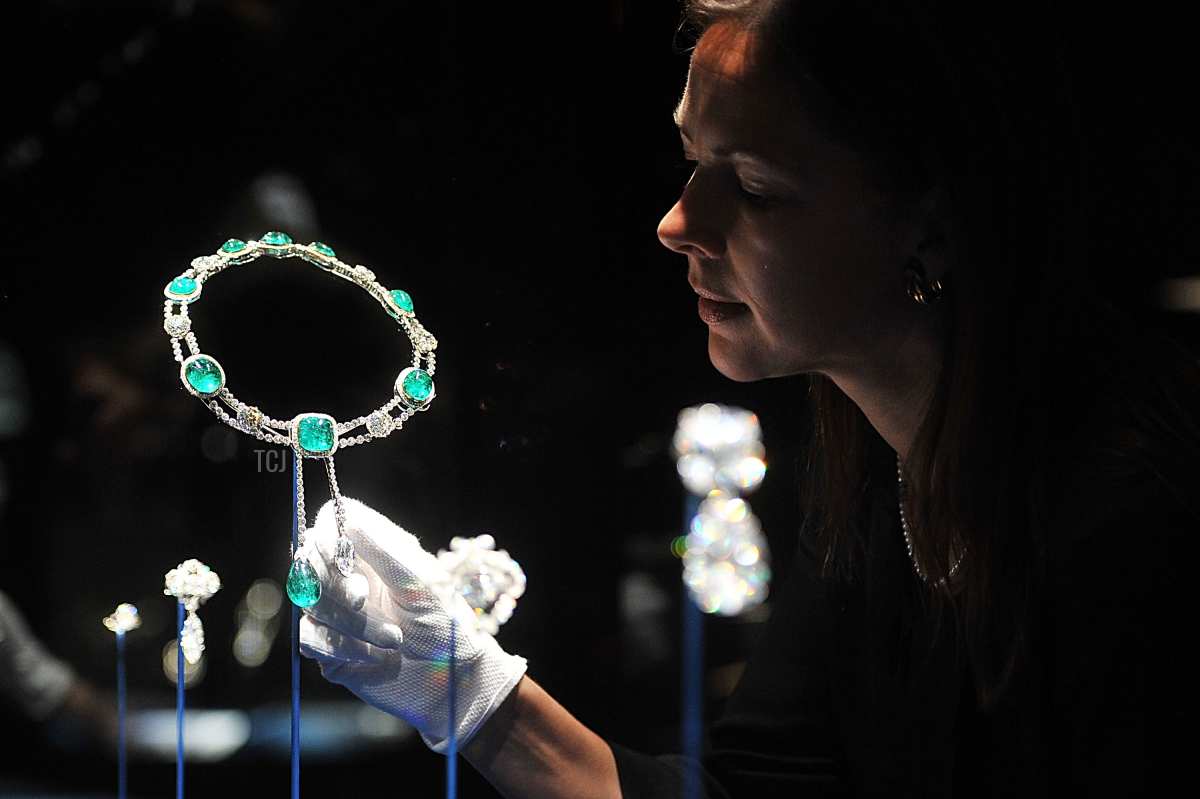
Our journey into the world of Queen Mary’s royal jewels continues today with a look at a piece that marries together two of the greatest caches of gems in the British royal collection: the Cullinan Diamonds and the Cambridge Emeralds. Here’s a closer look at the one-of-a-kind Delhi Durbar Necklace.
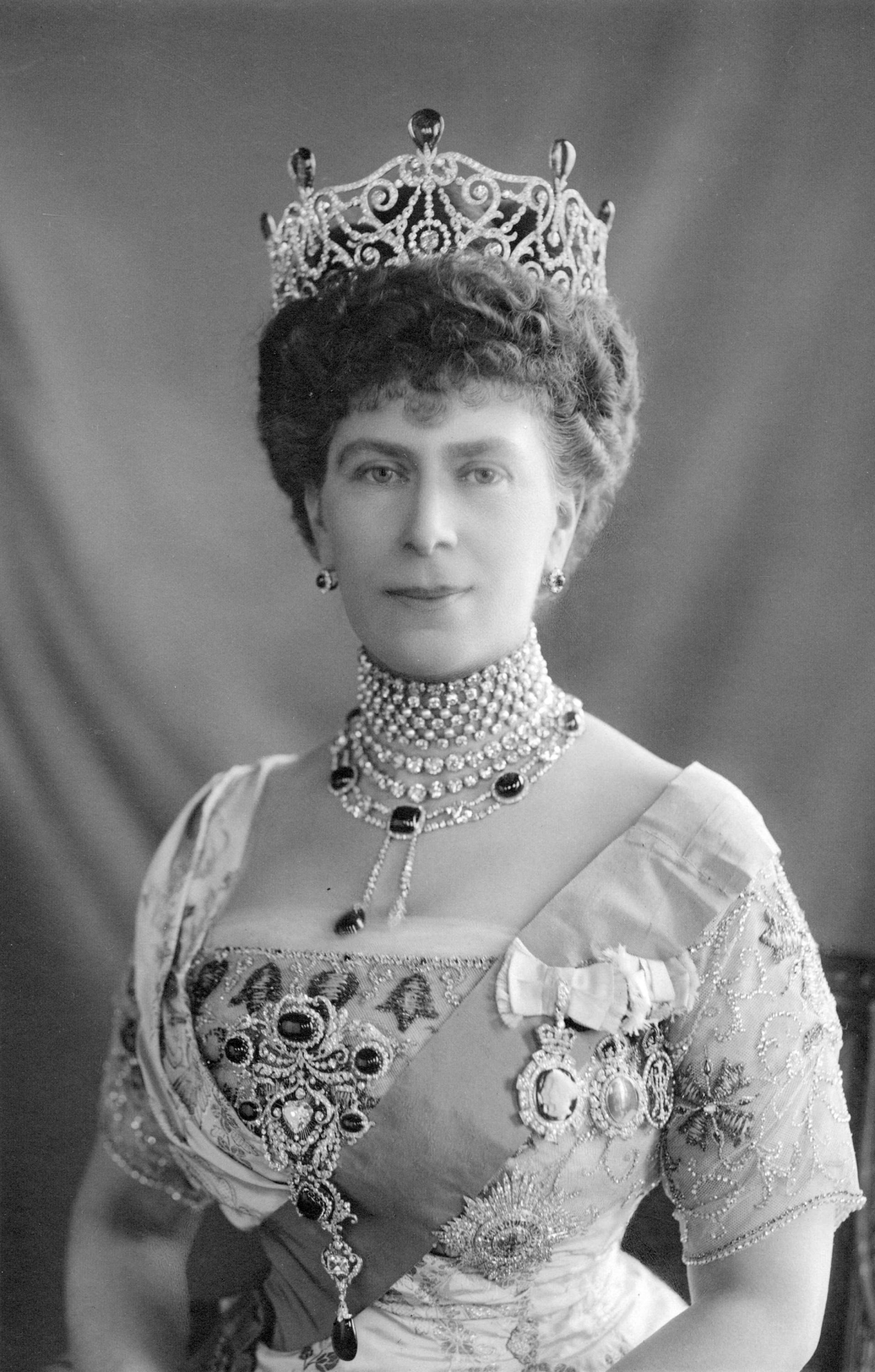
By 1911, when King George V and Queen Mary were preparing for their coronation, Mary’s jewelry collection included both the Cullinan and Cambridge gems. The emeralds came from her own family. Won in a lottery in Germany by her grandmother, Princess Augusta, Duchess of Cambridge, the emeralds had been passed down to her brother, Prince Francis of Teck. When he died in 1910, he bequeathed the emeralds to his mistress, the Countess of Kilmorey. Mary, though, wasn’t about to let the royal emeralds leave the family. She bought them back from Lady Kilmorey and placed them in her own jewelry box.
The Cullinan Diamonds, originally just one massive stone, had arrived in the royal collection in 1907. After the 3,106-carat diamond was presented to King Edward VII, it was cut in Amsterdam into nine large diamonds and 96 smaller brilliants. Six of the large diamonds (Cullinans III, IV, V, VII, VIII, and IX) were kept by the jeweler as part of their fee; these were bought by the South African government and presented to Mary in 1910. (She also inherited Cullinan VI in 1925 after Queen Alexandra’s death.)
Queen Mary wore two of the Cullinans on her coronation day in June 1911, but the grandest coronation ceremony of all was still to come. The Delhi Durbar, a massive celebration in India, was planned for that December. Mary decided to use some of the Cambridge Emeralds and some of the Cullinan Diamonds to make a spectacular new suite of jewelry to wear for that occasion. It would become known as the Delhi Durbar Parure. Above, Mary wears the parure in a portrait taken shortly after it was made. (Take an especially close look at that stomacher: you’ll find some of the Queen’s familiar brooches, including the Cullinan V Brooch, incorporated into the versatile, convertible ornament.)
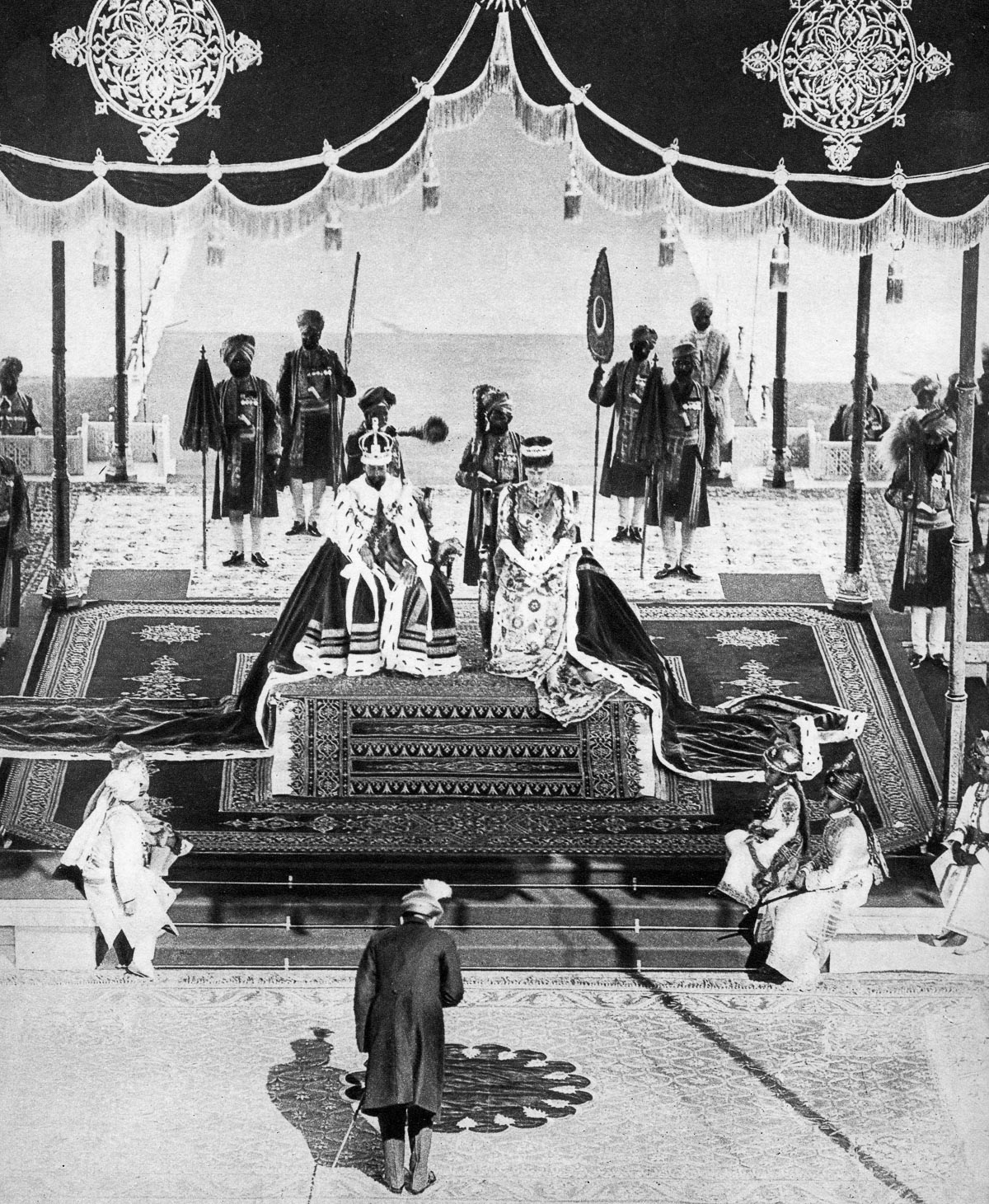
The set was constructed by Garrard in 1911 using both new gemstones and stones that were already part of the royal collection (including the Cambridge Emeralds and and Cullinan V, VII, and VIII Diamonds). The parure consisted of a large diamond tiara, topped by some of the Cambridge Emeralds, today’s necklace, plus earrings, a bracelet, a brooch, and a large stomacher. King George V personally paid the bill for the completion of the suite as a a 44th birthday gift for Queen Mary on May 26, 1911. He always referred to the suite’s diadem as “May’s best tiara.”
Queen Mary wore the Delhi Durbar Parure with her coronation robes for the Durbar in December 1911. The main event of the celebrations took place at Delhi’s Coronation Park on December 12. Royals from throughout India arrived to pay homage to the new Emperor and Empress. (Above, the Nizam of Hyderabad takes his turn. Yep, it’s that Nizam.) This would be the last of the imperial durbars in India; during the reigns of Edward VIII and George VI, prospective durbars were postponed and ultimately never took place, thanks to abdication, war, and the movement toward independence in India.
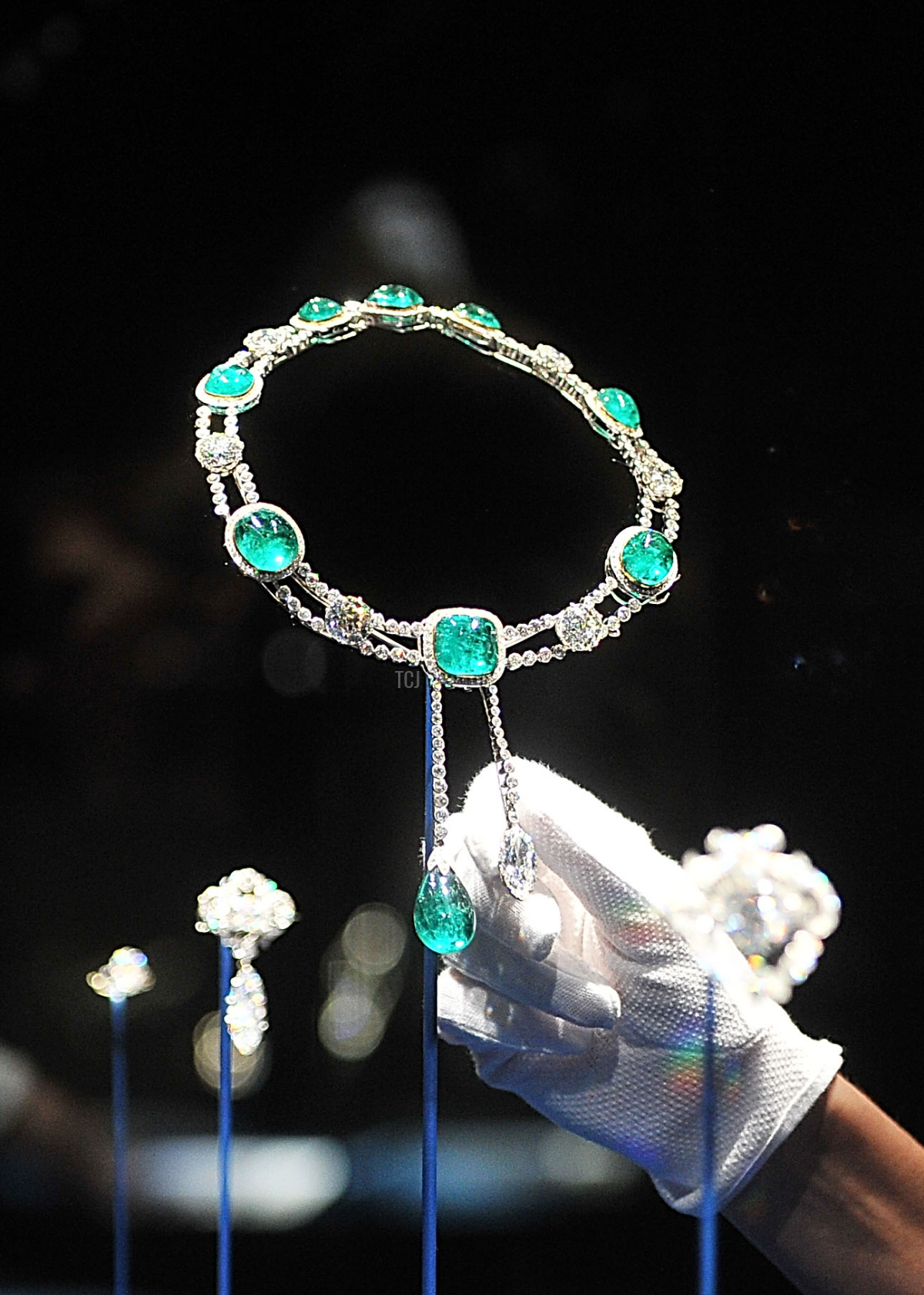
Here’s a closer look at the necklace from the Delhi Durbar Parure. The piece is designed as a modern necklace with alternating diamonds and eight of the Cambridge emeralds, as well as a pair of negligee pendants. In jewelry terms, a “negligee” is an ornament with two pendant sections, one of which is slightly longer, producing an asymmetrical effect. The design was particularly popular during the Edwardian era, and the Durbar necklace was made at the very end of that period. One of the pendants is a cabochon emerald drop from the Cambridge emerald collection; the other is the 8.8-carat Cullinan VII.
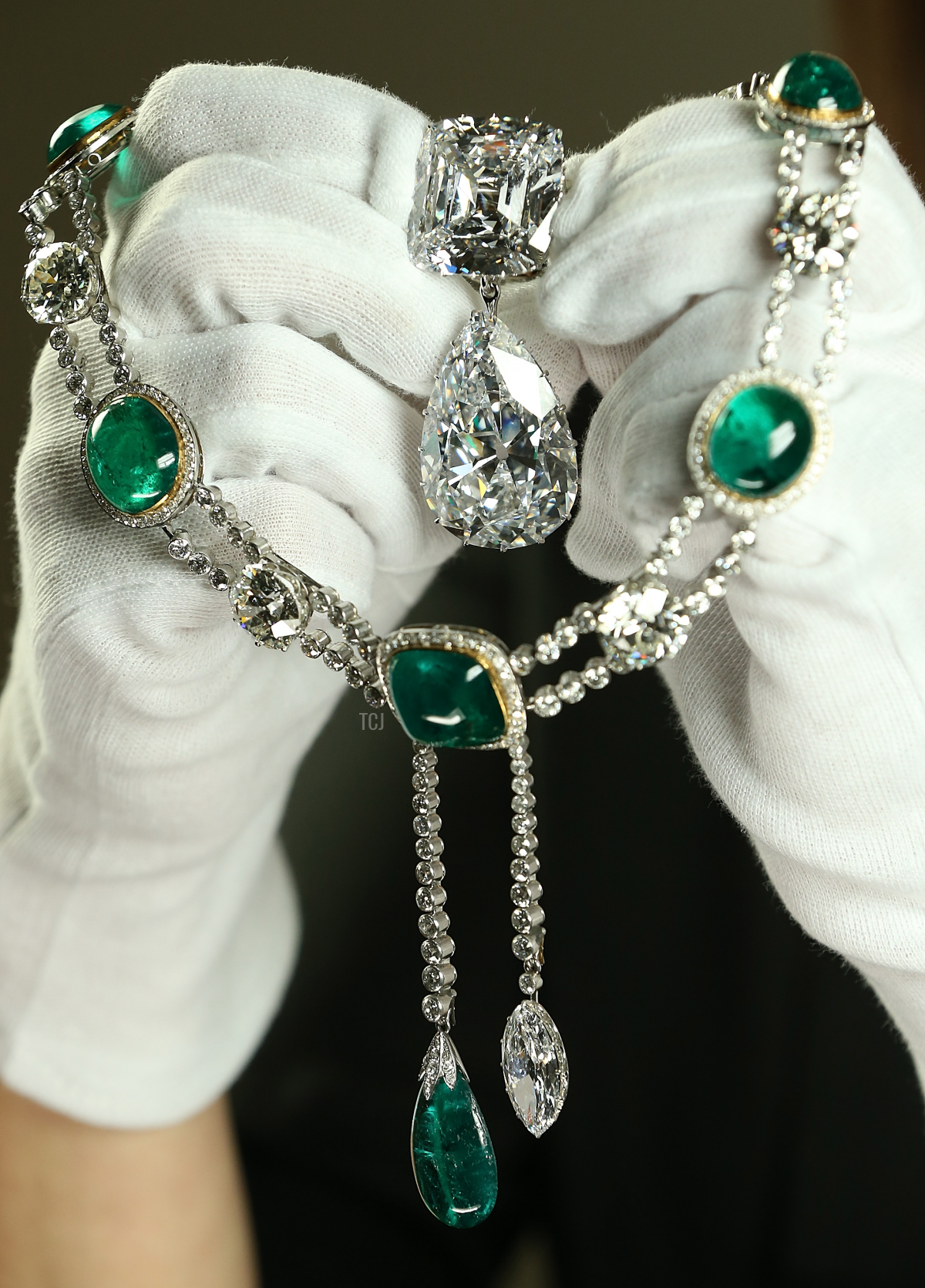
Here’s another view of the necklace that gives you a closer look at the setting of the piece, including the two pendants. The necklace can also be worn without the pendants, and the pendant stones themselves can be swapped out, too. (Hugh Roberts notes that, on at least one occasion, Mary wore the necklace with the Cullinan III on the longer chain and the emerald pendant on the shorter one. The Cullinan III is the large pear-shaped diamond also displayed above as part of the Cullinan III and IV Brooch.)
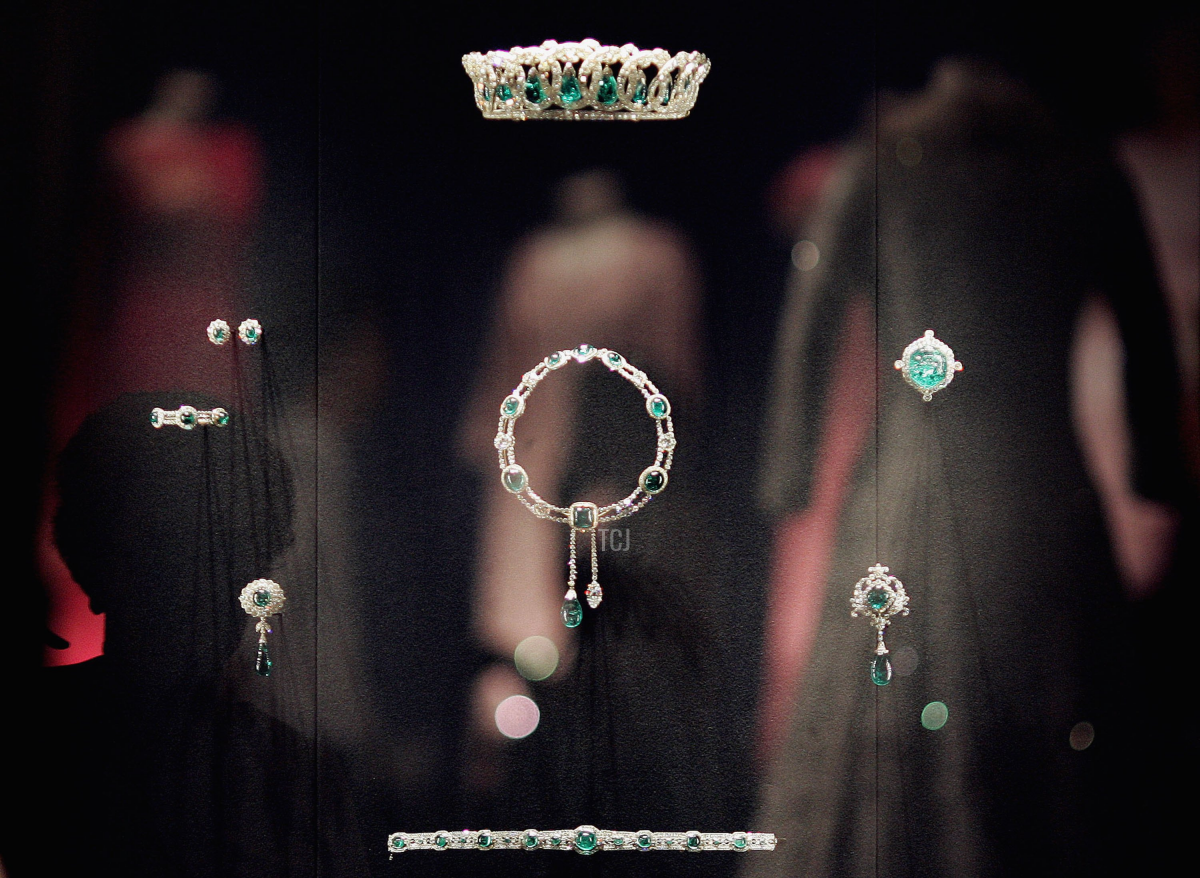
The necklace is displayed above as part of a collection of Mary’s jewels set with emeralds. Some of these pieces (the emerald and diamond cluster earrings, the bracelet, and the brooch on the lower right) also come from the Delhi Durbar Parure. The Cambridge Emerald Cluster Brooch, on the lower left, was part of the emerald inheritance from Mary’s family. The large brooch on the upper right side of the photograph, which features a stunning carved emerald, was given to Mary by the Ladies of India. They also presented her with a diamond and emerald necklace, which she later had remade into an Art Deco-style choker necklace. That choker, which was made famous by Princess Diana, is at the bottom of the photograph. And, of course, you’ll spot the famous Vladimir Tiara with its Cambridge emerald pendants at the top of the image. (Those pendants had previously been used as toppers on the Delhi Durbar Tiara.)
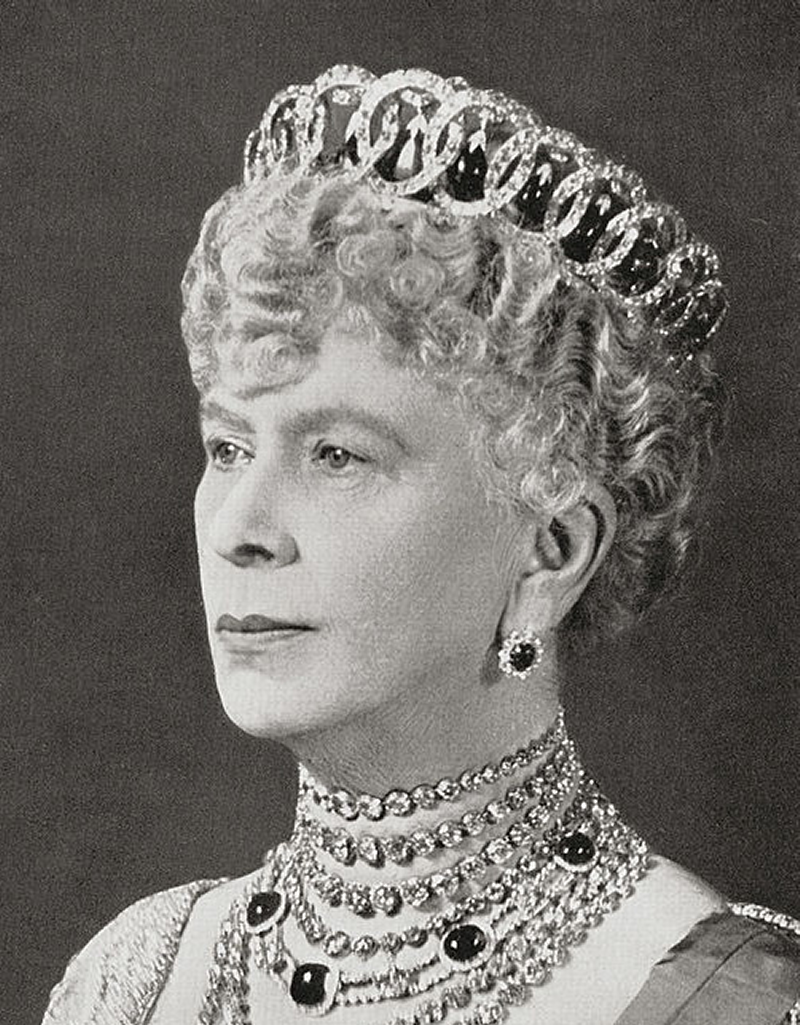
Mary sometimes wore the Delhi Durbar Necklace and Earrings with the emerald setting of the Vladimir Tiara. In the portrait above, taken in 1934, she wears the combination with several other diamond necklaces. You’ll note that she wore the Durbar Necklace without its pendants in this image.
Queen Mary bequeathed almost the entire Delhi Durbar Parure to her granddaughter, Queen Elizabeth II, when she died in 1953. There was one exception: Mary had loaned the tiara from the suite to the Queen Mother several years before, and it stayed in the Queen Mum’s collection until her death in 2002. But the rest of the suite, including the necklace, went to the Queen, who has worn it regularly in the years since.
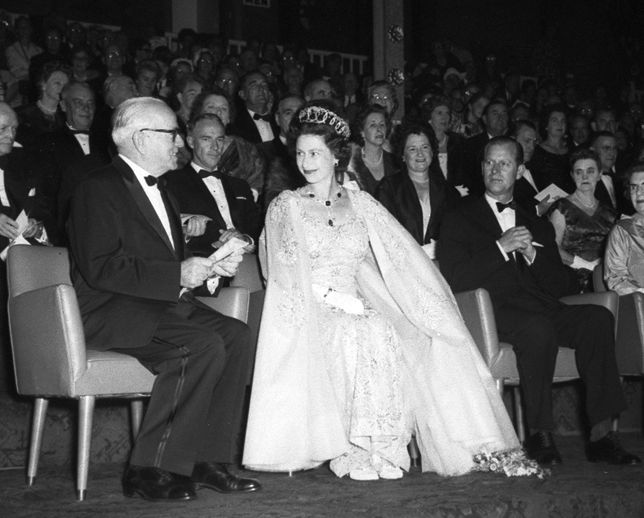
Because she did not have the Delhi Durbar Tiara in her possession for so many years, Queen Elizabeth II has almost always worn the necklace from the set with the emerald setting of the Vladimir Tiara instead. She wears the combination above in February 1963 during a visit to Australia.
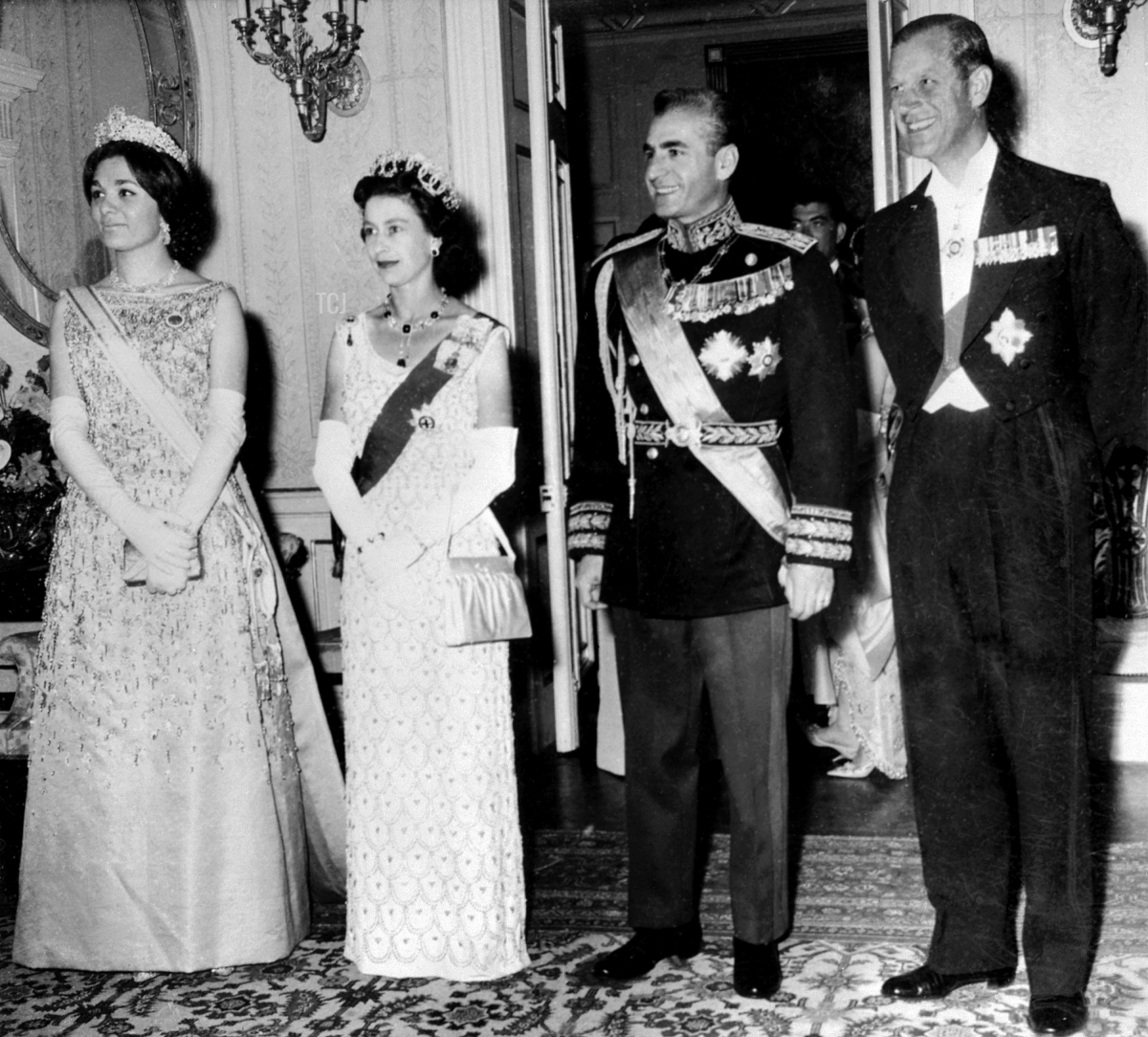
She also wore the necklace with the Vladimir Tiara, plus the Durbar earrings and bracelet and the Cambridge Emerald Cluster Brooch for a state visit to Tehran in March 1961.
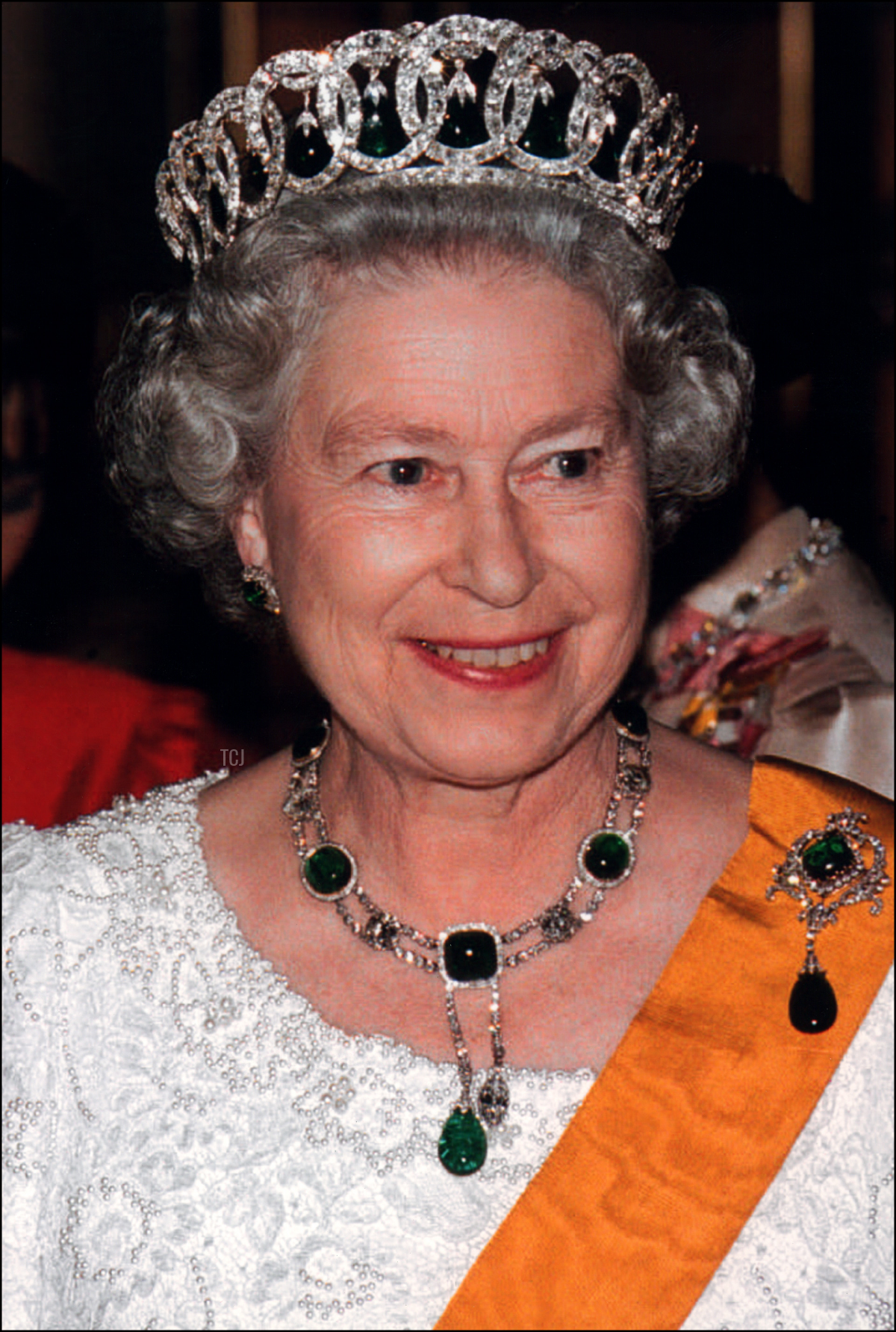
Here, she wears the necklace, earrings, and brooch from the Delhi Durbar Parure with the Vladimir Tiara during a visit to Thailand in October 1996.
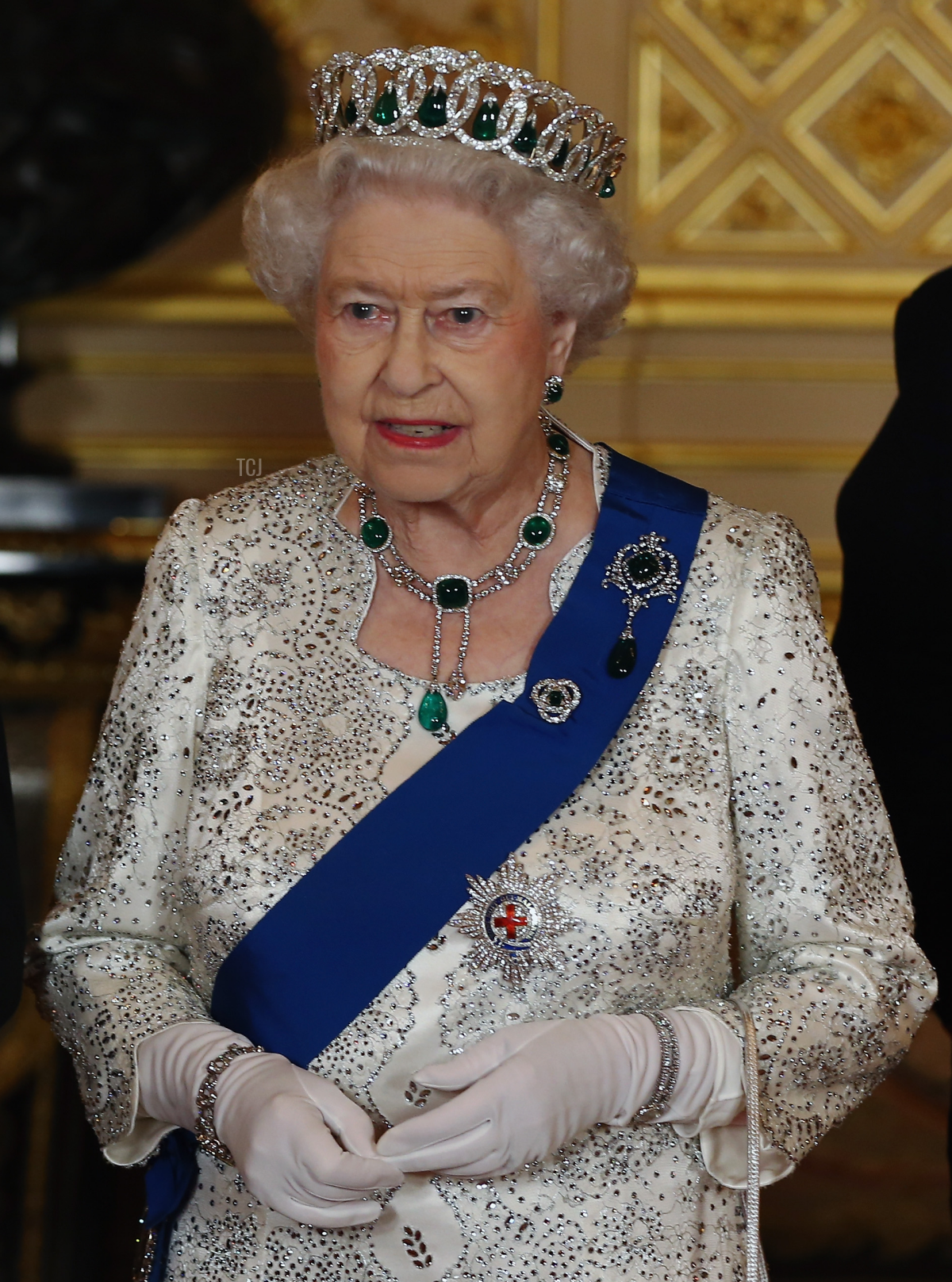
And in this photograph, she wears the same combination of jewels, plus another small emerald and diamond brooch, to host the President of Ireland for a state banquet at Windsor Castle in 2014.
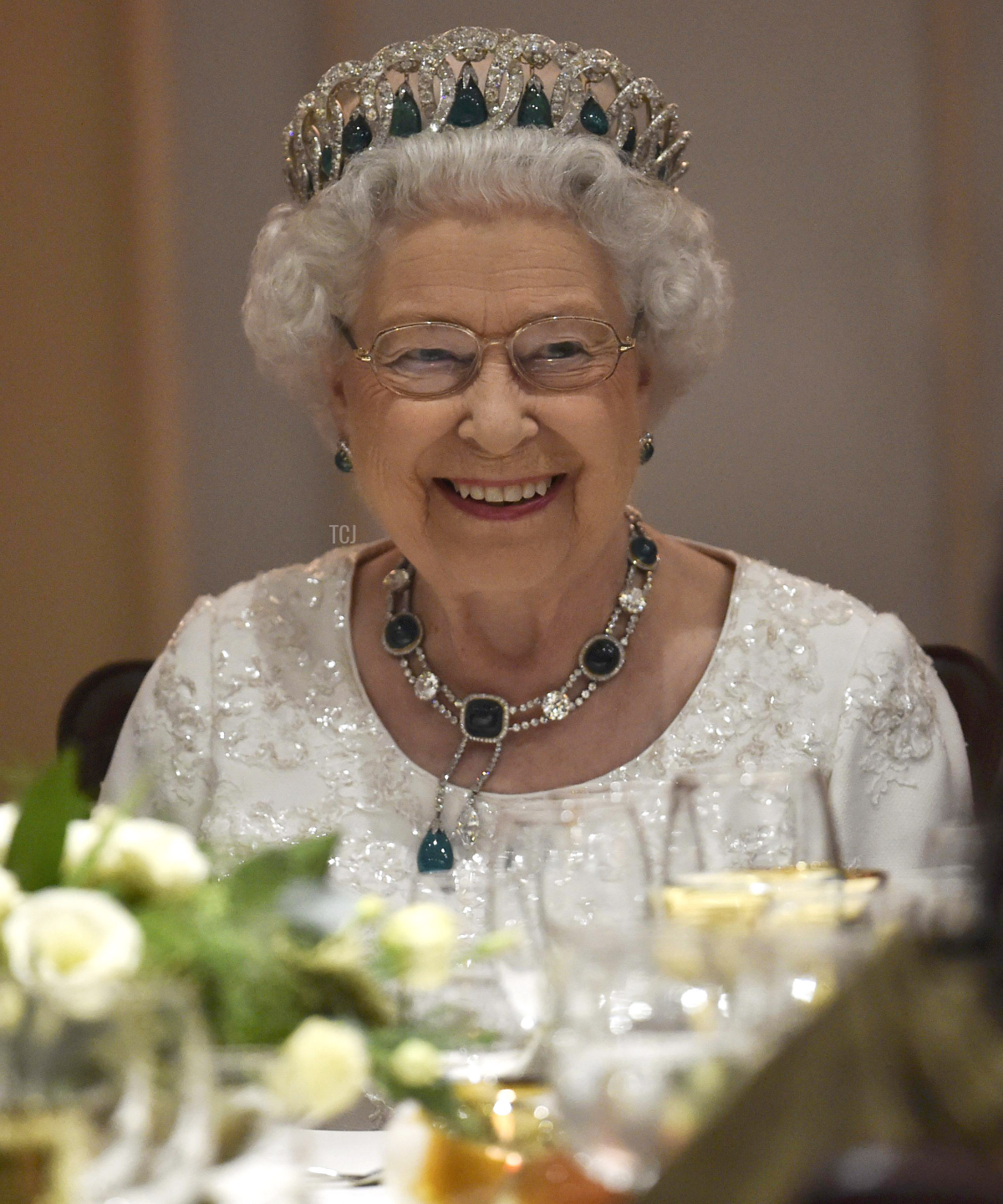
One of the Queen’s more recent appearances in the necklace came at the Commonwealth Heads of Government Meeting in Malta in 2015. She wore the necklace with its coordinating earrings and the Vladimir Tiara for the dinner held during the summit.
Leave a Reply
You must be logged in to post a comment.